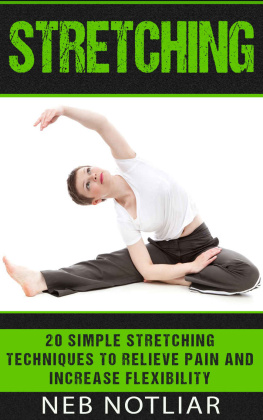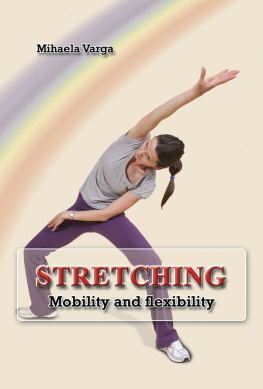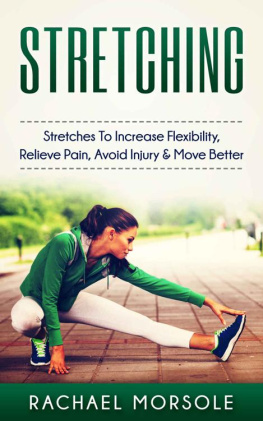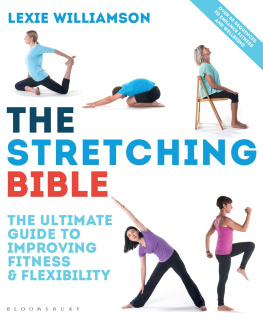Stretching for Beginners
Tips and Tricks to Some of the Best Stretching Methods to Improve Flexibility and Avoid Injuries
Copyright 2021 - All rights reserved.
The contents of this book may not be reproduced, duplicated, or transmitted without direct written permission from the author.
Under no circumstances will any legal responsibility or blame be held against the publisher for any reparation, damages, or monetary loss due to the information herein, either directly or indirectly.
Legal Notice:
You cannot amend, distribute, sell, use, quote or paraphrase any part or the content within this book without the consent of the author.
Disclaimer Notice:
Please note the information contained within this document is for educational and entertainment purposes only. No warranties of any kind are expressed or implied. Readers acknowledge that the author is not engaging in the rendering of legal, financial, medical, or professional advice. Please consult a licensed professional before attempting any techniques outlined in this book.
By reading this document, the reader agrees that under no circumstances are the author responsible for any losses, direct or indirect, which are incurred because of the use of information contained within this document, including, but not limited to, errors, omissions, or inaccuracies.
Table of Contents
Introduction
Life today has become easier and more convenient, what with all the technological advancements that we get to enjoy. However, the convenience of modern living brings multiple stresses that tend to take a toll on our body and overall health. It could be from overwork, excessive use of technology, extreme sports play, or even being in a job that requires you to be sitting all day or constantly on the move.
Stress can cause the body to suffer from muscle pain and soreness, pinched nerves, and even more permanent disabilities, like severe body injuries. A quick, safe, and effective way to deal with such symptoms is stretching. The good thing about this simple therapy is that you can do it anytime and anywhere. Also, stretching does not require any special equipment.
If you want to learn more about stretching, its underlying principles, and how it can improve your flexibility, then you can use this book. In this comprehensive reading material, you can delve even deeper into what stretching and flexibility are all about and how to do stretches safely even if you are a beginner. It even tackles the technical and clinical aspects of stretching and flexibility in a simple and straightforward manner, so you can grasp them easily.
With that, expect to have an easier time understanding even those otherwise difficult concepts to grasp. Get well-rounded information about stretching for beginners and how you can use it to repair your body by getting a copy of this book. You will also learn how to use stretching exercises to make your body fitter, more relaxed, and flexible, and how to stretch safely as a senior.
Chapter 1: Stretching and Its Different Types
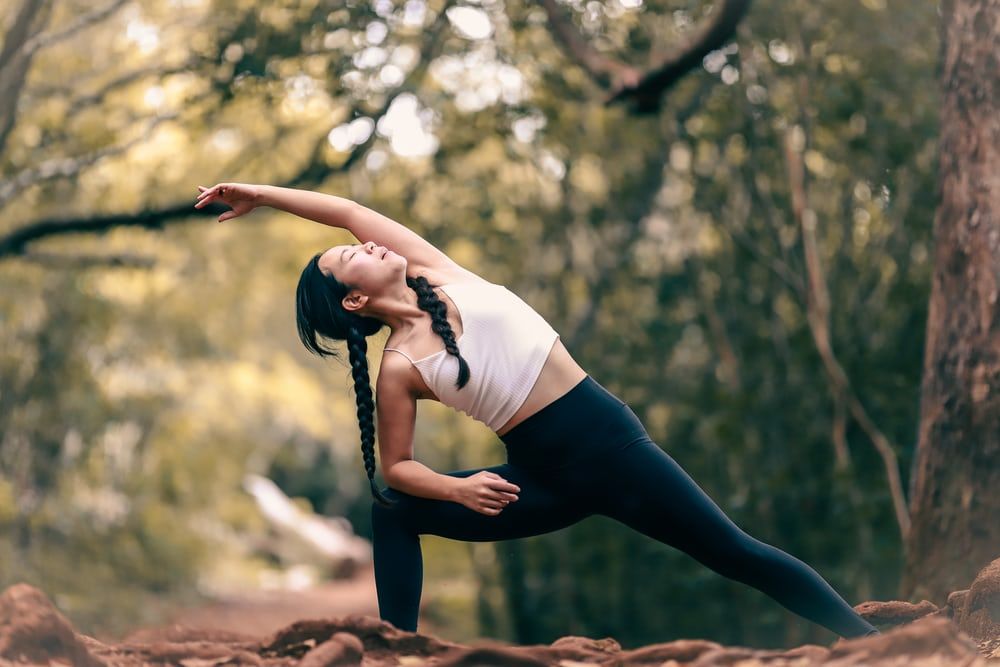
If you think that stretching is only for athletes, like gymnasts and runners, then you are wrong. It is an activity that everyone should do. Everyone needs to stretch as a means of protecting their mobility and health. Note that building muscles and attaining superior aerobic fitness is not usually enough to attain better health and fitness. It is also necessary to think about your flexibility, and you can only achieve that by stretching regularly.
Many people are unaware of how important it is to stretch regularly, but it is time to spread the information regarding how important it is to make it a part of your fitness routine. Stretching even needs to be a daily activity. It is what you need to keep your body flexible and mobile.
A Clearer Definition of Stretching
Stretching is a type of physical exercise that involves intentionally flexing or stretching a certain tendon, muscle, or muscle group as a means of boosting the elasticity of your muscles and attaining a more comfortable muscle tone. This results in increased flexibility, range of motion, and muscle control.
You can also use stretching therapeutically to help alleviate cramps. It can significantly improve your ability to function well when performing your daily activities.
As far as its basic form is concerned, you can look at stretching as an instinctive and natural activity. Humans are not the only ones who perform it. A lot of animals stretch, too. In most cases, this activity comes with yawning. Stretching happens by instinct, usually upon waking up from sleep, after leaving a confined area or space, or after being inactive for a prolonged period.
In terms of physical fitness, stretching is a basic tenet as it is the key to improving your flexibility. Athletes even make stretching a part of their routines. They use it to warm up before exercise and cool down right after. By doing that, they can lower their risk of dealing with injuries and boost their performance.
The Consequences of Inadequate Stretching
Stretching is a crucial aspect of your physical fitness as a lack of this physical exercise may lead to several issues that affect your body. For instance, not stretching enough can cause shortened muscles that can eventually develop painful knots.
Inadequate stretching can also make you prone to injury because you are not performing an activity designed to elongate your muscles. Poor flexibility caused by inadequate stretching may also negatively affect your joints.
It can lead to poor joint health as the joints need constant movement to keep up the health of your cartilage and the other structures within them. It is also the wide range of movements in your joints that can help in boosting blood supply and nutrients.
Another possible consequence of inadequate stretching is inflexible muscles that tend to tire out too quickly. When your muscles get tired easily, your opposing muscle groups will have to work doubly hard. This can further result in muscle fatigue and injuries.
When that happens, your muscles will also be unable to give your joints enough protection from chronic injuries. Your hamstrings, for instance, can contribute a lot to stabilizing your knees. It can also help prevent ACL tears.
One more thing that reduced flexibility brought on by inadequate stretching does is produce abnormal stress on every distant tissue and structure from the original site of inflexibility. A great example is knee tendonitis that also relates to tightness in the calf.
Muscles stretched regularly also have the advantage of enjoying better oxygenation, which may not happen if your muscles are tense. Having tense muscles mean they will be unable to receive enough vital nutrients and oxygen.
If you want to avoid the consequences of inadequate stretching, make it a habit to stretch before and after working out. By stretching before your workouts, your muscles will be prepared to receive the full impact of your exercise. Stretching after the exercise is also beneficial as it relaxes your muscles and prevents soreness.
Before working out, do some dynamic stretches like glute bridges and walking lunges. Static stretches that individually target certain muscles are also ideal for your cool-down exercises. Let's get to know more about these types of stretches in the next section.
Types of Stretching
Stretching comes in different types with each stretch having its own benefits. Stretches can either be static (without motion) and dynamic (with motion). It is also further subdivided into other types that will allow you to pick the specific stretching techniques that produce the exact results you want.








